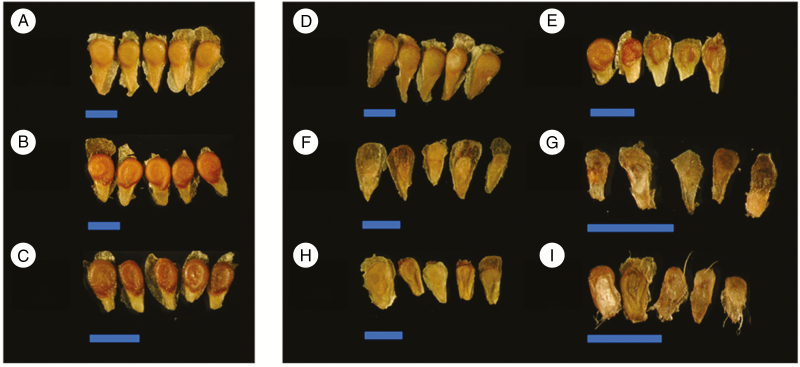Fig. 2.
Images of mature seeds from selected crosses within and between the three wild tomato lineages Solanum arcanum ‘marañón’ (Am), S. chilense (C) and S. peruvianum (P). In all images, blue scale bars represent 2 mm. (A–C) Intraspecific crosses within Am (A, LA2185A × LA1626B), C (B, LA4329B × LA2748B) and P (C, LA2744B × LA2964A); all seeds appear viable with plump aspect and coiled embryo. (D–I) Reciprocal hybrid crosses: Am × C (D, LA2185A × LA4329B) and C × Am (E, LA4329B × LA2185A), Am × P (F, LA2185A × LA2744B) and P × Am (G, LA2744B × LA2185A), C × P (H, LA4329B × LA2744B) and P × C (I, LA2744B × LA4329B). Note the variability in seed size and shape in hybrid crosses; seeds appear viable in (D), partially viable in (E) and completely inviable in (F–I). The same crosses were used in seed size measurements (see Fig. 3).

